Zero Step Entry Universal Design - 7 Tips to Make Your Ramp Fantastic
Posted on by Eric Rubel
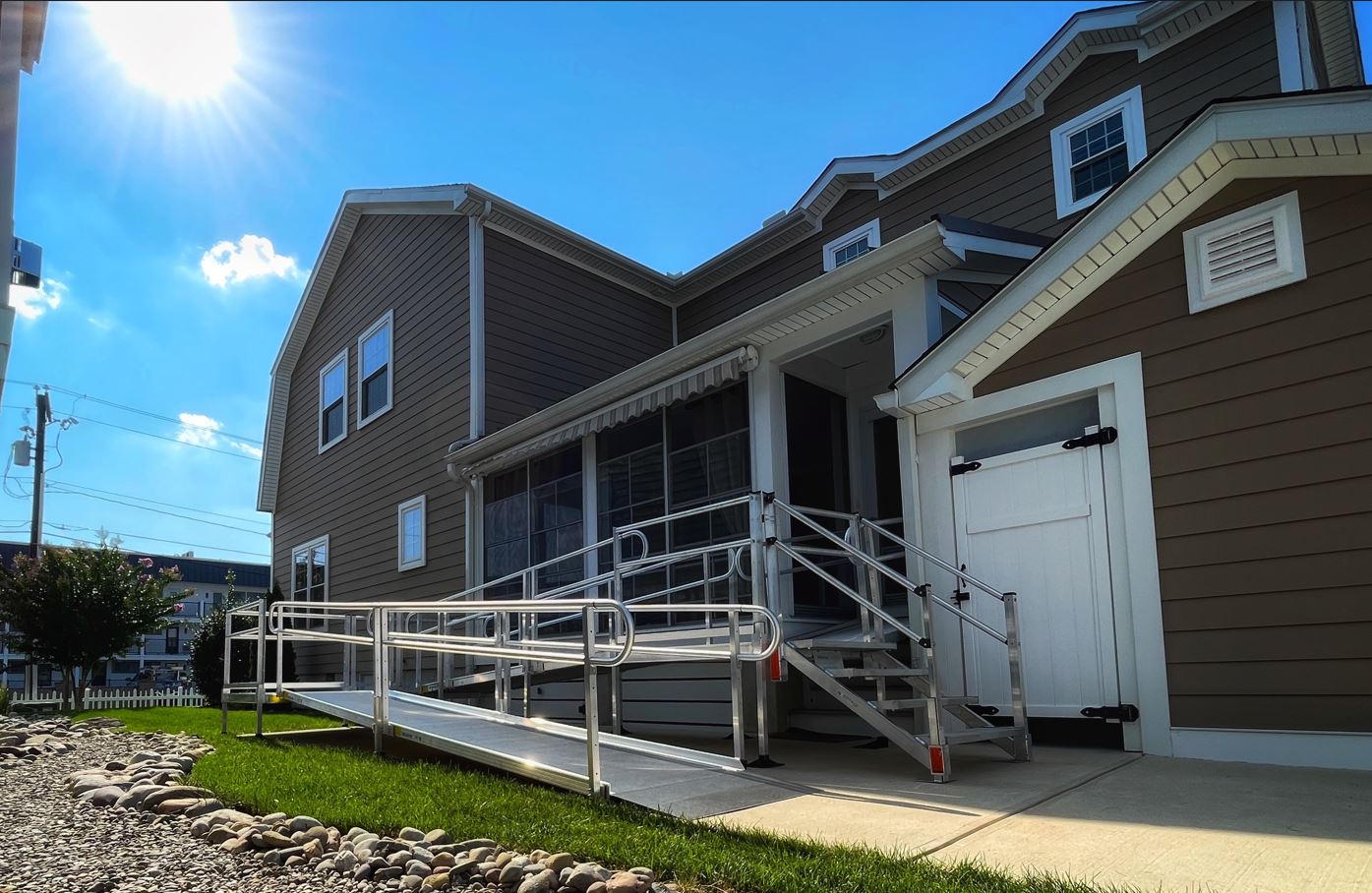
Zero step entry or wheelchair ramps can make your home or building accessible and be a beautiful addition. However, there are many common mistakes and costly errors that you can prevent by continuing to read this resource.
Universal Design states that the entrance should work for everyone, however what modifications are needed to include everyone. Here are the top 7 tips:
1. Who are the Users? Are They Using Any Assistive Devices to Enter the House?
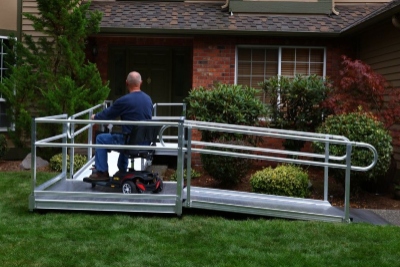
The difference between a wheelchair, scooter, walker, stroller, rolling luggage is subtle. They all have wheels, but the mobility needs of the user can widely vary. While ADA suggests a maximum slope of 1 inch of rise for every foot of ramp, this is the steepest recommended and would not be suitable for someone using a walker with limited strength. The ADA specifically states, “The least possible slope shall be used for any wheelchair ramp.” Most people automatically focus on standards like this and seek to meet the minimum standard. But, users may need a wheelchair ramp to exceed the standards and be easier to go up or down. Surprisingly, more falls happen on the way down the ramp, because momentum and gravity are stronger forces. And because of the increased speed of a fall, there is more force for an injury.
Know your users, and exceed their need for your best ramp design. This is why Lifeway Mobility's experts always take the time to understand the needs of the customer any others living at the home before taking measurements and recommending a ramp layout.
2. Make the Pathway Fit the House
In every design, we start with the door usually in the garage or in the front of the house, and end with where the user wants to enter the ramp. This is usually where we get out of a vehicle/transportation, like a driveway, garage, parking lot. The best tip to make your ramp fit the house is to identify where the ramp should start and stop that has the least amount of vertical height difference. Also, you need to look at the house and design along the house vs. out away from the house. This will gain you a visual benefit, ramps looks better if they blend into the structure of the building, but also a design benefit.
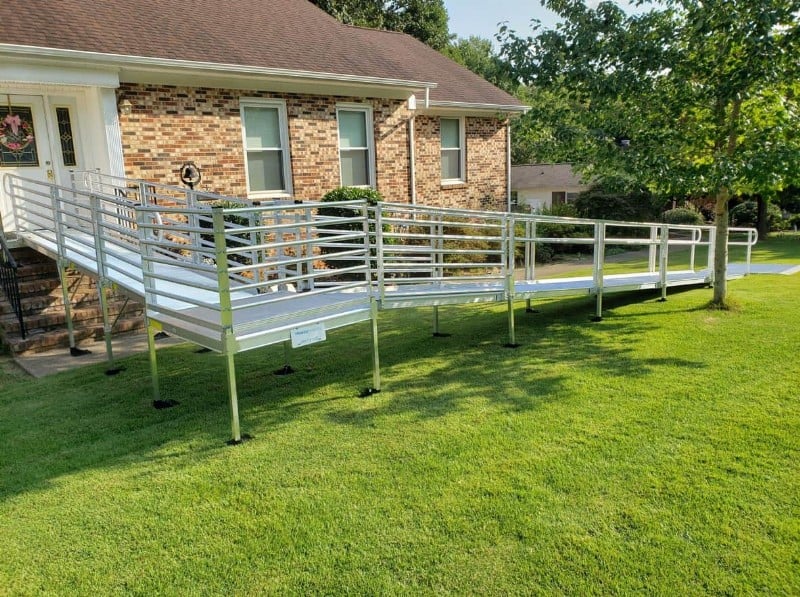
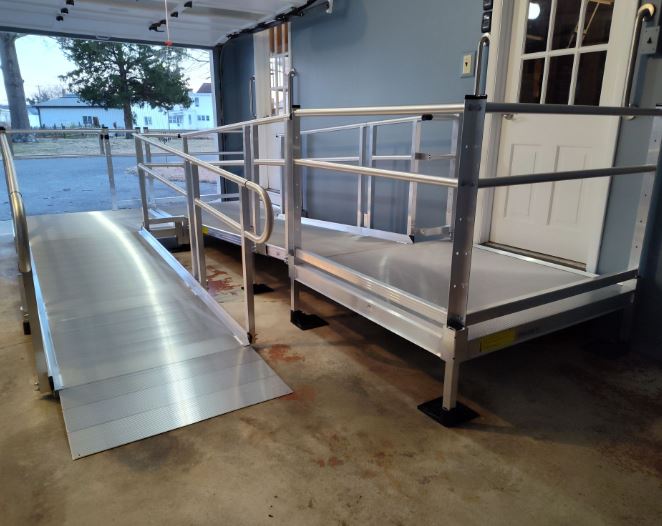
Wheelchair ramps are easier to use when they follow the design of the home. However, watch for the home with short walls and multiple corners. Because a ramp should have a 5 foot level platform at the top of the ramp and every time you turn, a ramp will get longer with more turns and should be designed to be a straight as possible and fit the home. Also, you want to use a type of ramp and materials to fit the home, as you will compliment the look of your ramp instead of stand out.
3. What Type of Wheelchair Ramp Is Needed? Is the Need Temporary, Portable or Permanent?
There are 3 major types of wheelchair ramps and ramp materials:
- Aluminum
- Concrete
- Wood
They each have their advantages, but you first must know how long the ramp is needed. We have seen a wood ramp only used for a year because the owner moved homes and unfortunately, the wood ramp was worthless for the new home. Aluminum wheelchair ramps have several advantages because there are portable options, as well as modular ones that can be customized and even reconfigured to be moved or reused, and it doesn’t require any maintenance like concrete/brick and wood. Wood also requires much more maintenance than concrete.
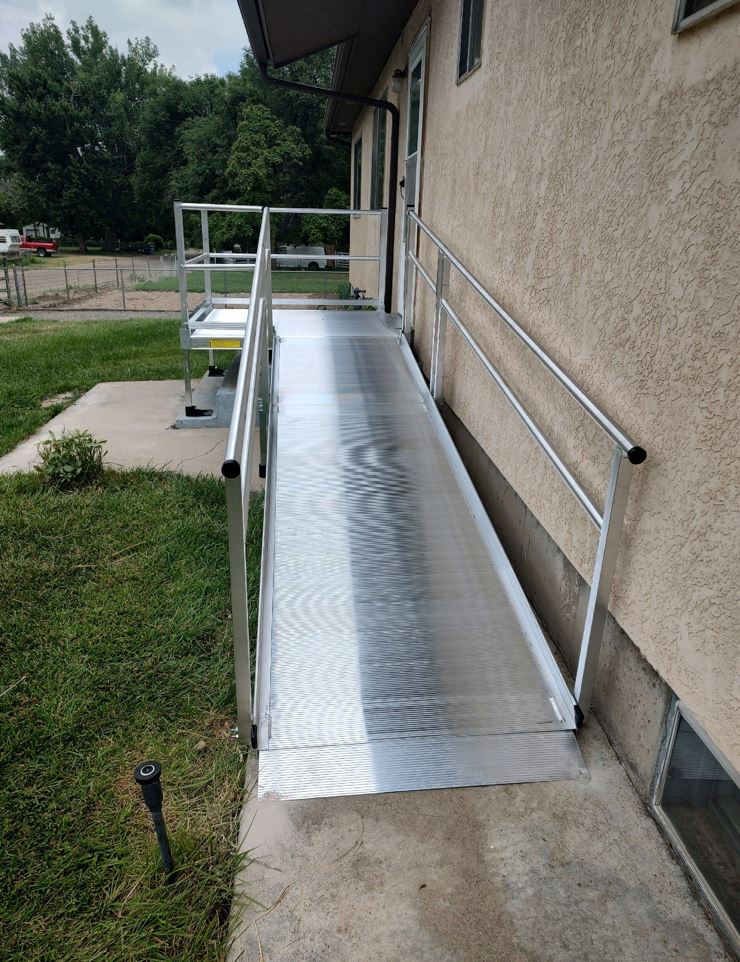
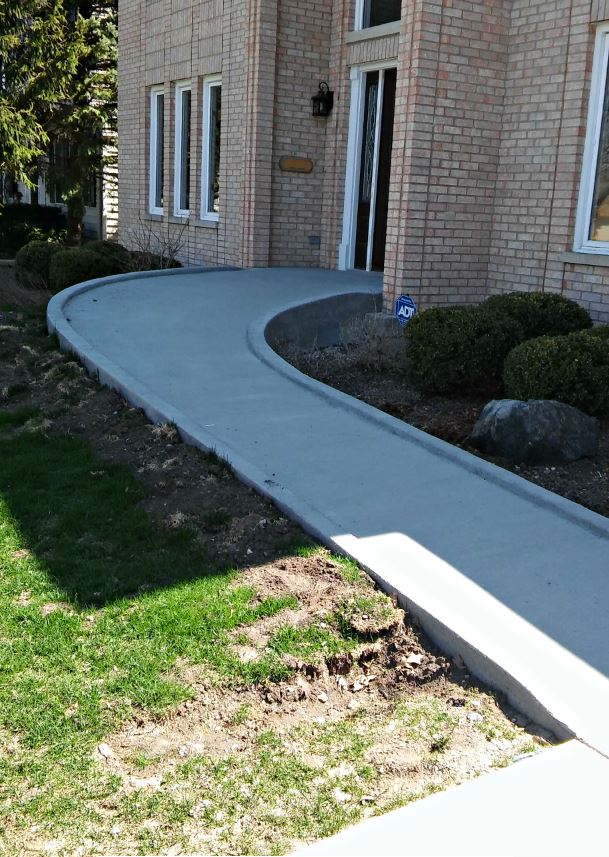
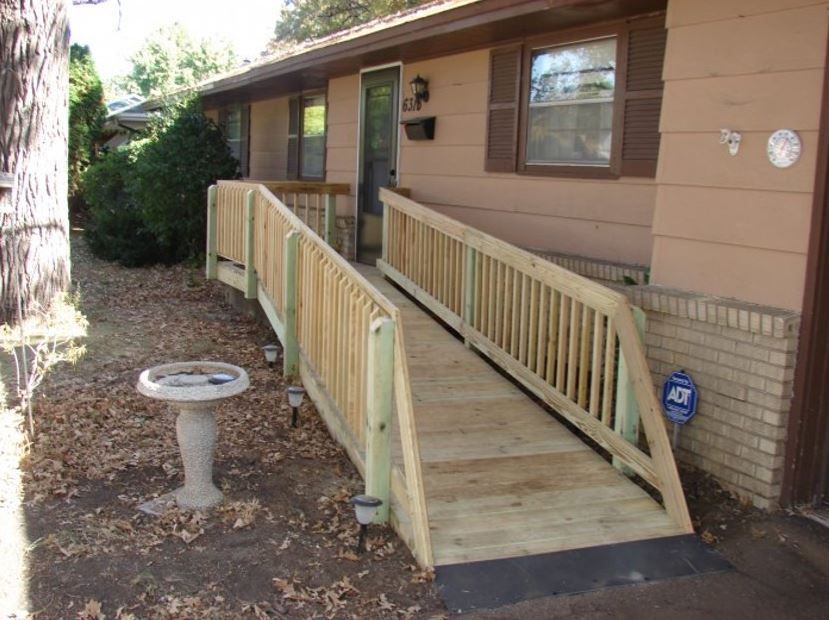
4. What is the Best Surface for Your Ramp?
The biggest mistake that we see here is to focus on what it look like vs a surface that prevents slips and falls with a good grip. While trex or composite wood is more attractive and offers less maintenance, it can be the most slippery surface, especially if you run your board down the ramp like a bowling alley. Concrete gives a good surface and grip, but ice and snow can build up and be dangerous.
Again, the aluminum ramps can excel here as they offer either a black friction surface like sand paper, or a extruded edges every quarter inch that looks like grooves in the surface. This will be a much better surface in rain and snow. We cannot forget that the ramp should look beautiful and blend into the home, so many of the aluminum ramps now come in colors for the discerning home owner.
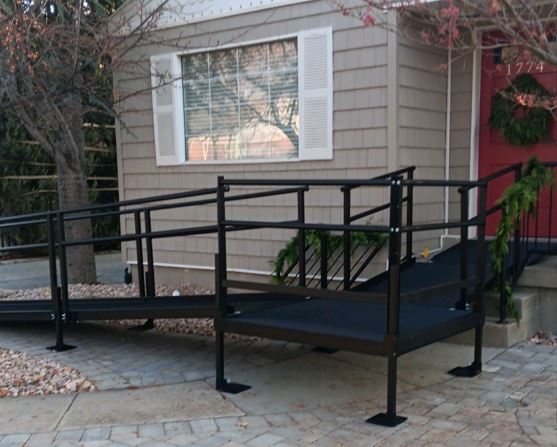
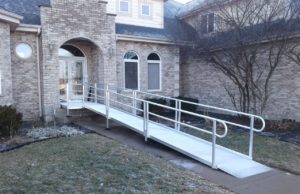
5. Little Things Matter
The Threshold of your ramp at the bottom is crucial for ease of use and safety. Also, where the ramp meets the threshold of the door into the house is just as important. The two pictures below show 1-2 inch bumps as you enter and exit the ramps in these two areas. These can be avoided by working with a home accessibility expert.

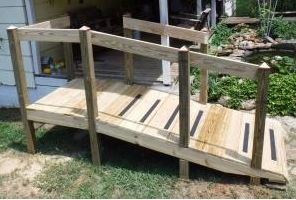
A 3/4 in bump is all the is need to bring a walker or wheelchair to a complete stop, like slamming on your brakes in your vehicle. The difference is that when you slam on your brakes, you know you will violently stop. Using a ramp and hitting a small bump can cause you to fall down or out of your chair, you can hit the door frame as you enter or exit the house, or possible you cannot get over the bump and cannot use the ramp at all. The WORST possibility is that you have to ask for help and lose the independence that a ramps is SUPPOSED to PROVIDE.
6. Type of Handrails
The Handrail of a ramp is the most intimate part of the ramp because it is what you touch or glide your hand along. A safe smooth surface for your hand is just as important for your feet or mobility device. ADA requires a smooth, uninterrupted handrail that you can wrap your fingers around
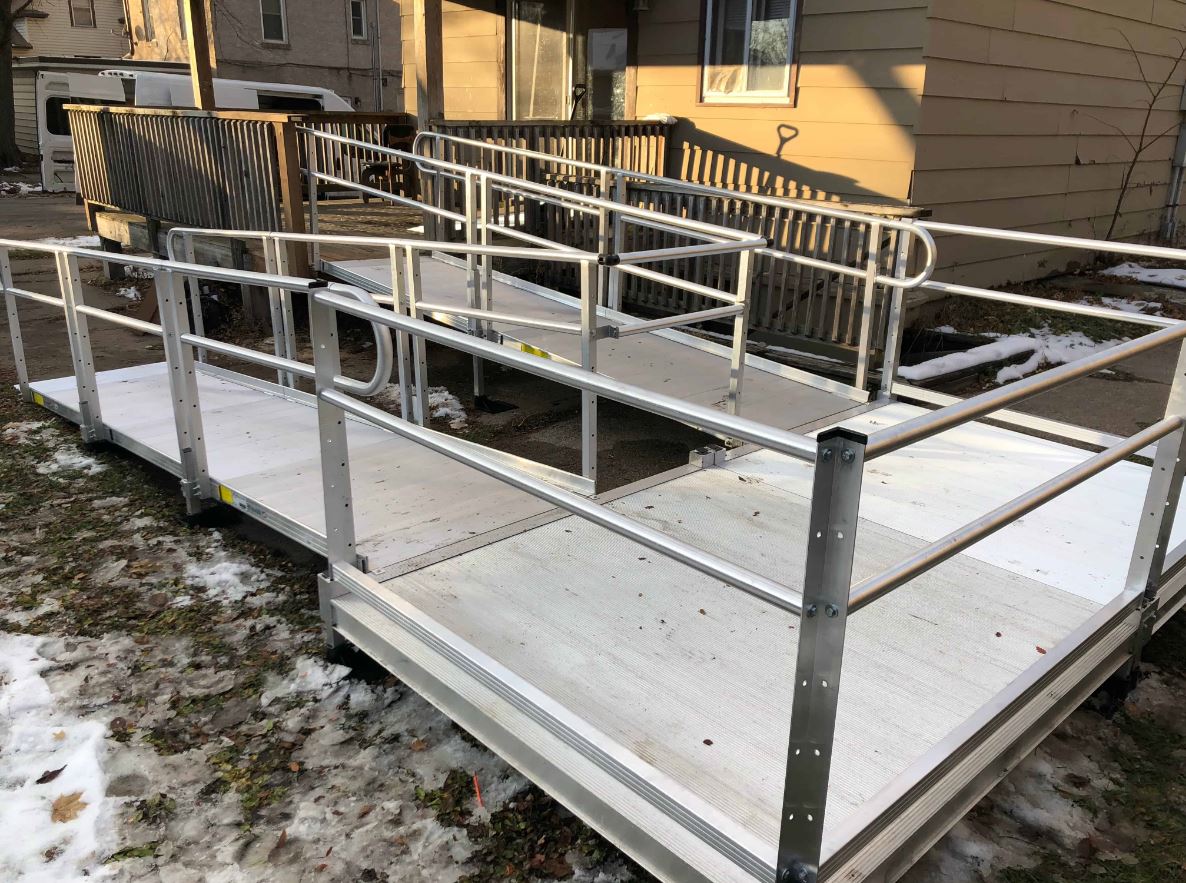
7. Maintenance
When choosing a wheelchair ramp for your home, it's importance to consider maintenance and how that might impact the long-term cost of the ramp. Unfortunately, the least expensive ramps are wood and many people choose plywood, but it will deteriorate within 2-3 years. Wood wheelchair ramps require the most maintenance because sun, rain, snow, heat, and cold all cause the wood to expand and contract. Staining or painting is required every 2-3 years.
Concrete or brick ramps require sealing to avoid cracking, and because they are so heavy, they can sink or shift, causing the ramp to be unusable. Steel Handrails may require painting. This can add 10-25% of costs to the price of a ramp if you include the needed future maintenance.
Aluminum wheelchair ramps may be a bit more expensive up front, but no maintenance is required, making it the most cost-advantageous of the three material types over the long haul.
Contact us to learn more about universal design when it comes to wheelchair ramps, or to schedule your FREE ramp consultation!
